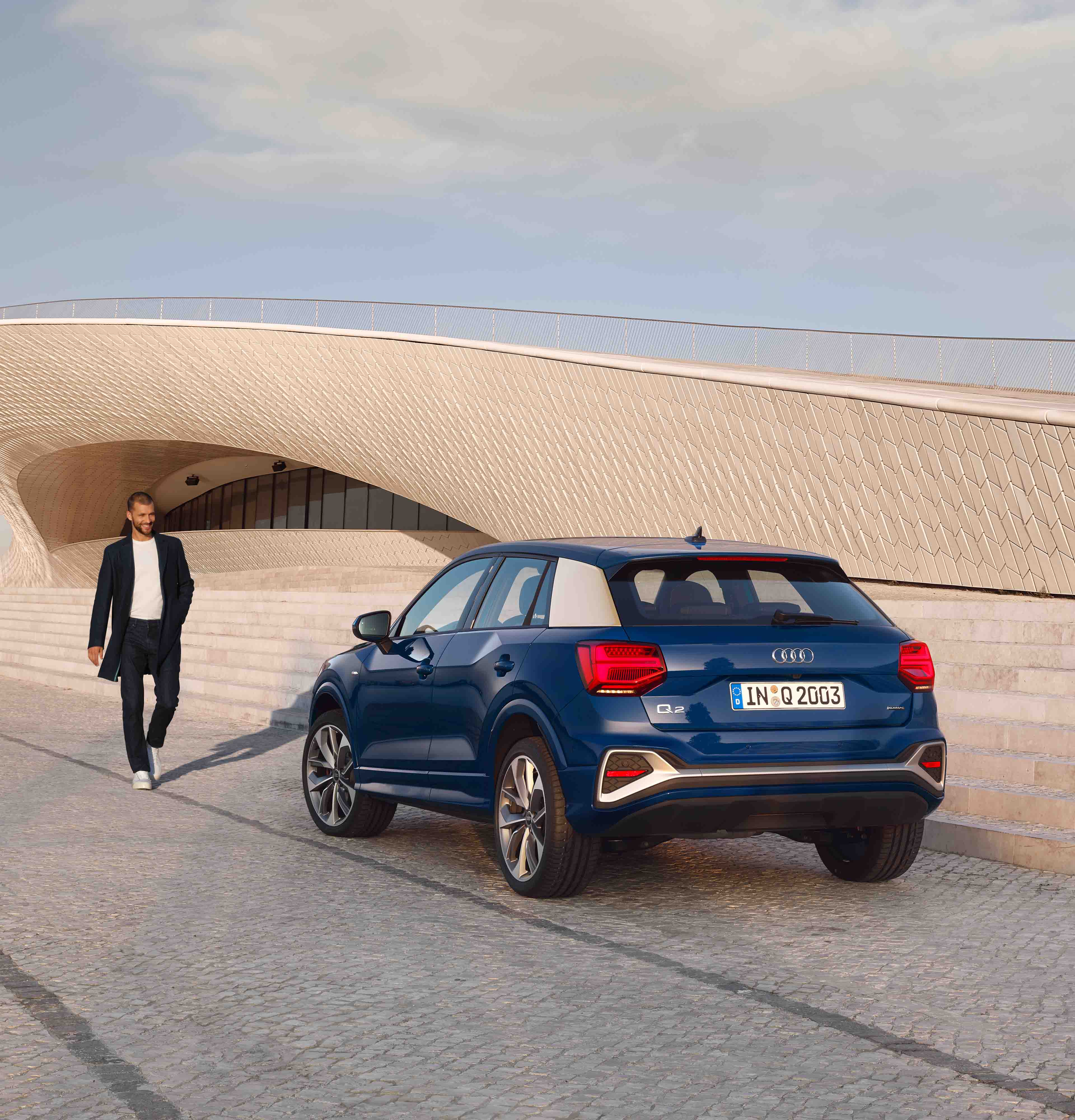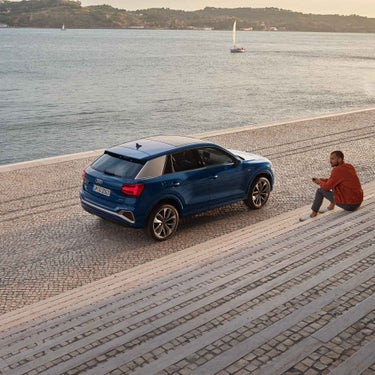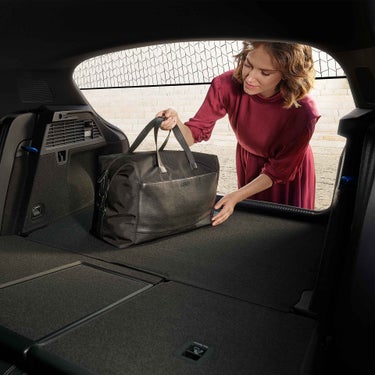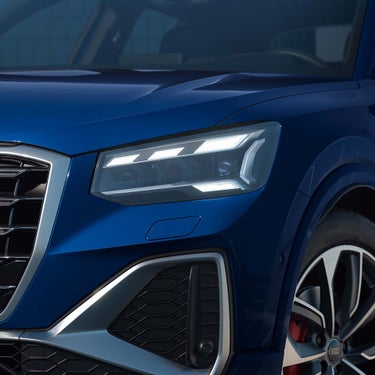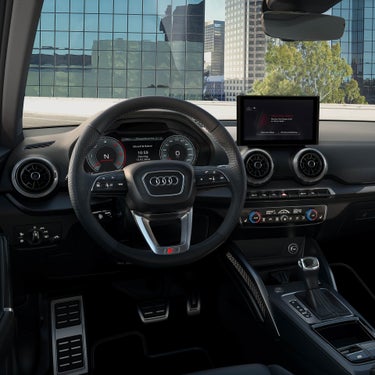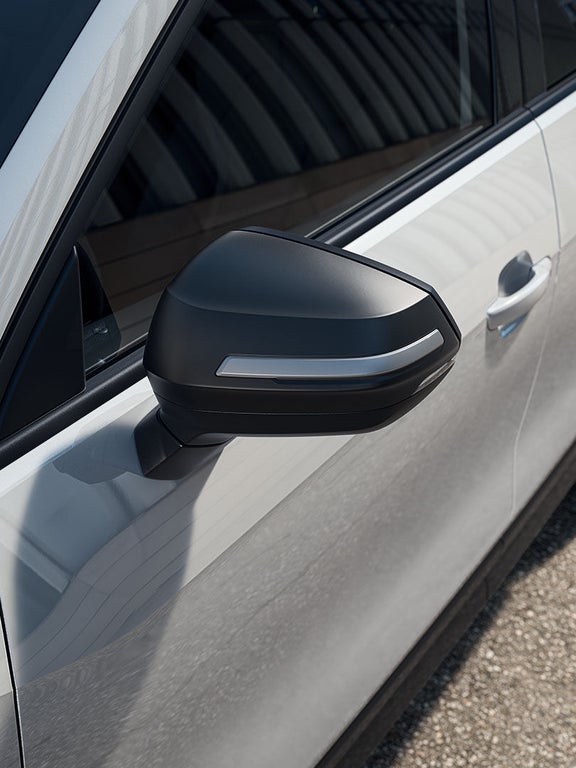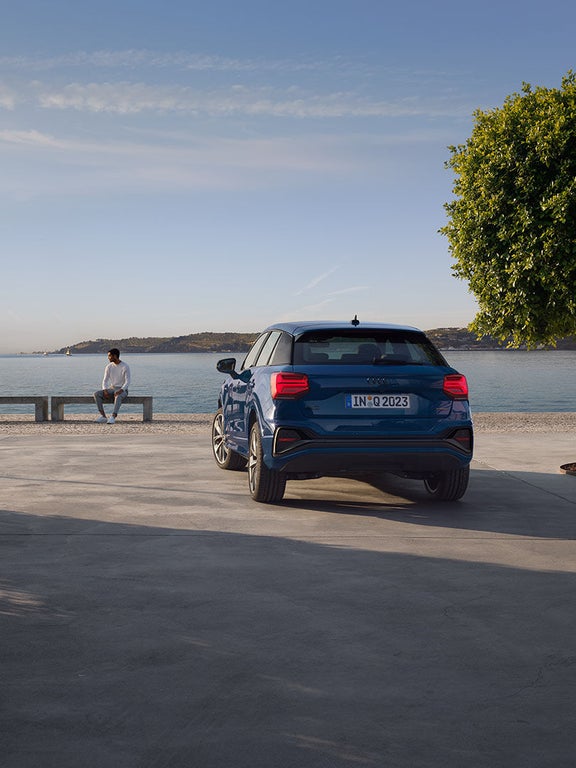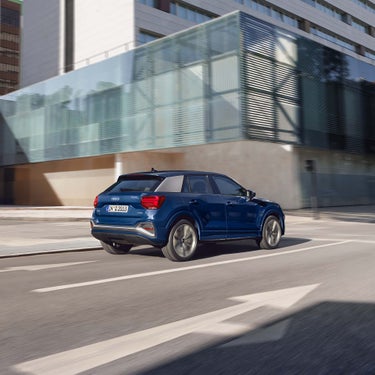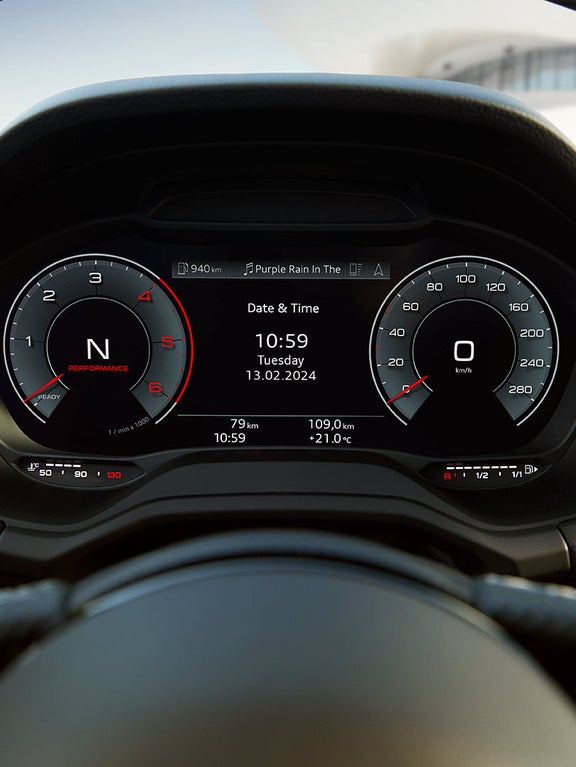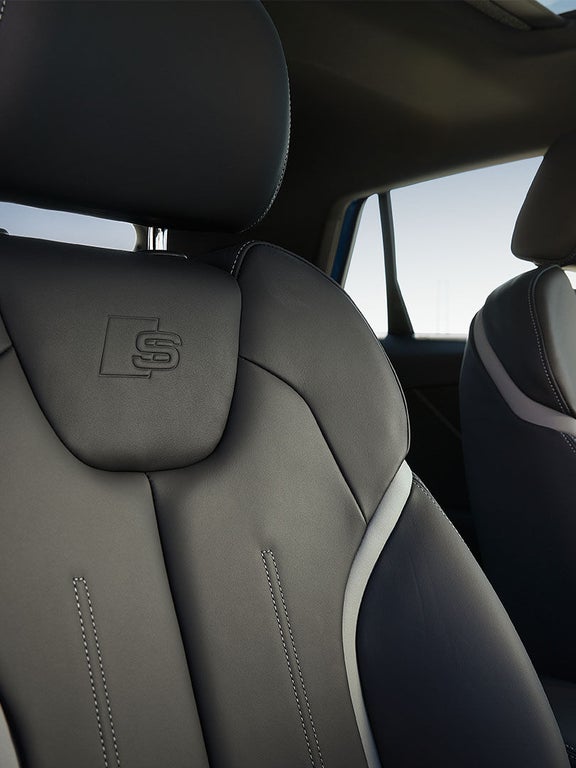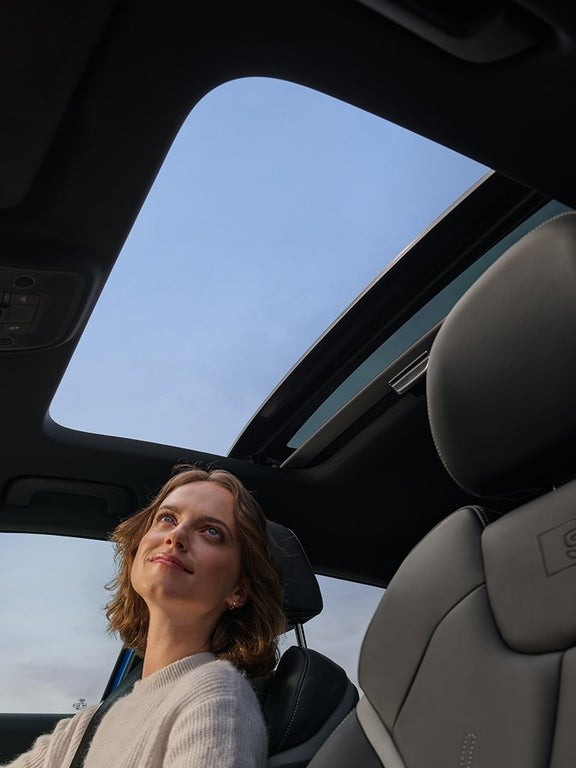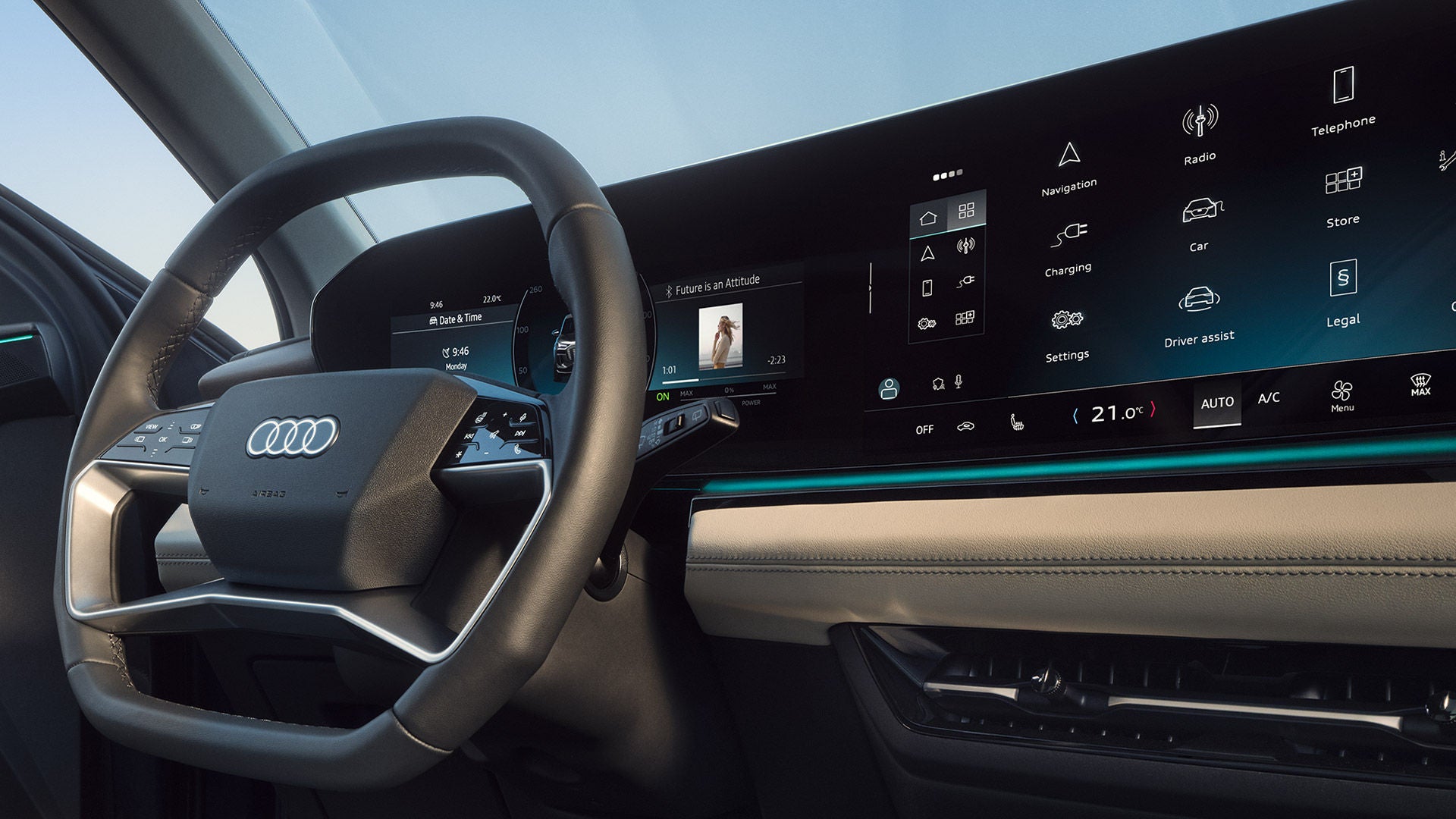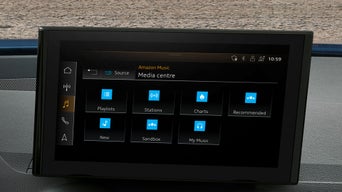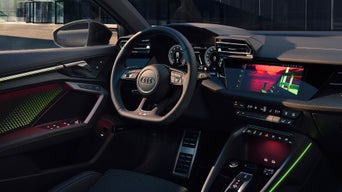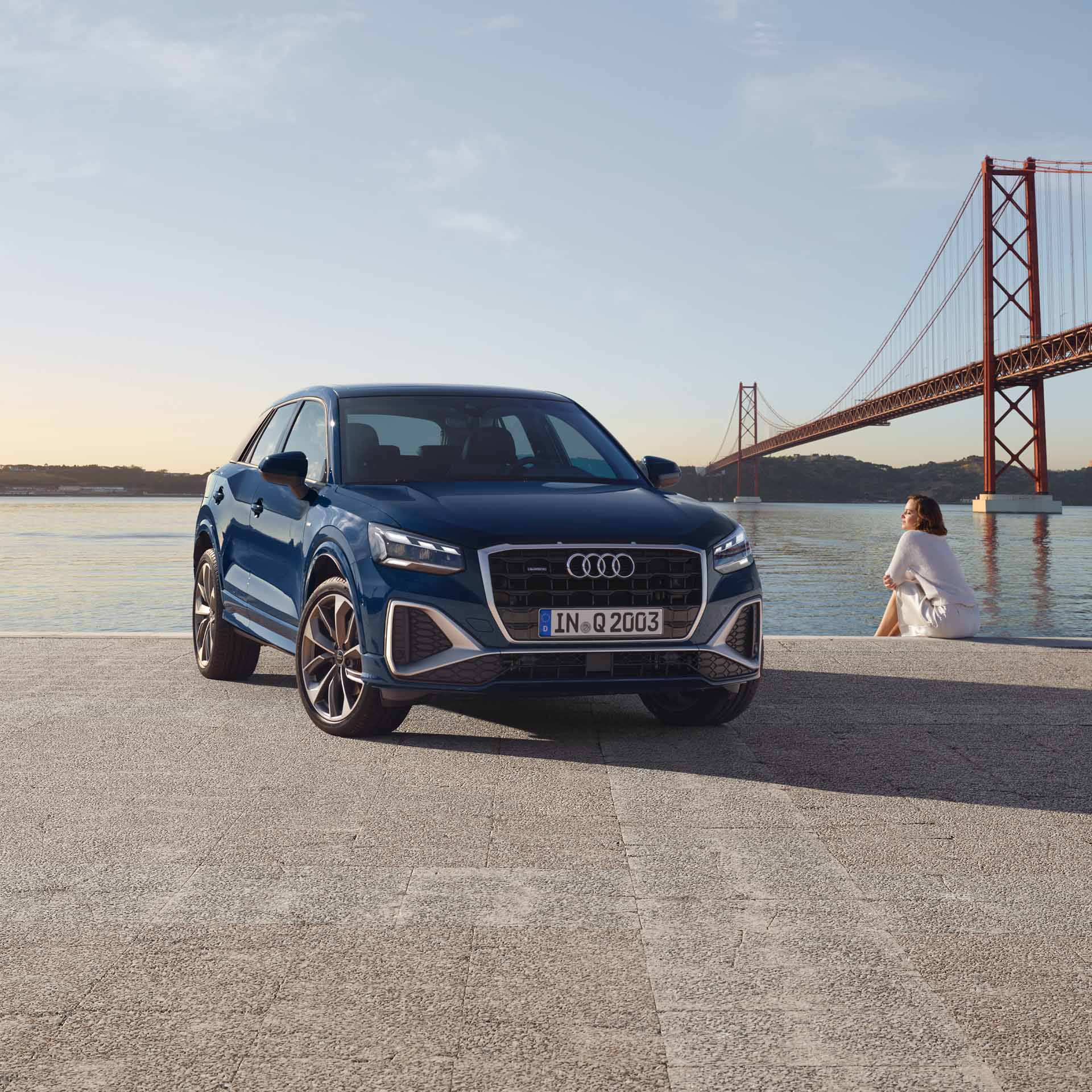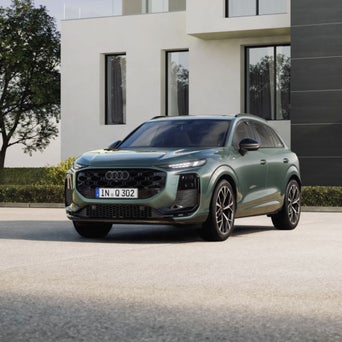Finance is provided by way of Hire Purchase Agreement from Volkswagen Financial Services Ireland Limited and is subject to lending criteria. Terms and conditions apply. Volkswagen Financial Services Ireland Limited, trading as Audi Financial Services is regulated by the Central Bank of Ireland.
Warning: You may have to pay charges if you pay off a hire-purchase agreement early. If you do not meet the repayments on a hire purchase agreement, your account will go into arrears. This may affect your credit rating, which may limit your ability to access credit, a hire-purchase agreement, a consumer-hire agreement or a BNPL agreement in the future.
SUV with an edge.
Strikingly full of character – the design of the front and rear bumpers and the dynamic, eccentric body lines lend the Audi Q2 its powerful presence. The advanced and S line equipment lines along with attractive wheel designs and exterior colours give each Audi Q2 its very own personal look.
Raring to go.
The Audi Q2 guarantees fantastic fun at the wheel thanks to its powerful drive and innovative technologies.Interior.
Featuring interior S line⁵ and sport seats, front in fine Nappa leather, black⁵, the vehicle interior has an impressively consistent focus on sportiness.Audi digital services.
Look forward to a fully connected interior and discover the world of digitalisation in your vehicle. Experience a wide range of digital possibilities and fantastic infotainment with Audi connect, among other features. Your myAudi account gives your direct access to all Audi digital services. It is your key to the Audi customer area – and to the myAudi app⁹, which you can use to manage and control many vehicle functions.Practical and spacious.
The luggage capacity measures 405 litres, which goes up to an impressive 1,050 litres with the rear seat backrests folded down. TDI models with quattro drive have 50 litres less. The storage and luggage compartment package⁵ as well as the luggage compartment lid⁵ that you open and close electrically provide even more convenience when loading and unloading the vehicle.
Audi exclusive¹⁰.
An individual vehicle to match your personality. Audi exclusive¹⁰ offers you a wide range of configuration options for your new Audi Q2, including the Audi exclusive¹⁰ customised paint finish in merlin, pearl effect.²Please visit www.audi.com/connect or contact your Audi partner for more detailed information about Audi connect.
³Please note: The systems work only within system limits and provide assistance while driving. However, the driver remains responsible for driving the vehicle and is required to be attentive at all times.
⁵The equipment mentioned is an option available for an extra charge.
⁸Depending on country-specific availability.
⁹Depending on country-specific availability. The current compatibility of the iOS/Android operating system can be found in the description of the myAudi app in the relevant app store. Prior registration at www.my.audi.com is required.
¹⁰Audi exclusive is an option available for an extra charge from Audi Sport GmbH.
¹¹Only for S tronic 7-speed dual-clutch transmission.
¹²Part of the equipment Audi connect navigation & infotainment available optionally for an extra charge.
¹³Amazon, Alexa and all related logos are trademarks of Amazon.com, Inc. or its affiliates. Use of Amazon Music can lead to additional costs. An Amazon account is required for use.
¹⁴Part of the equipment Audi connect navigation & infotainment available optionally for an extra charge.

